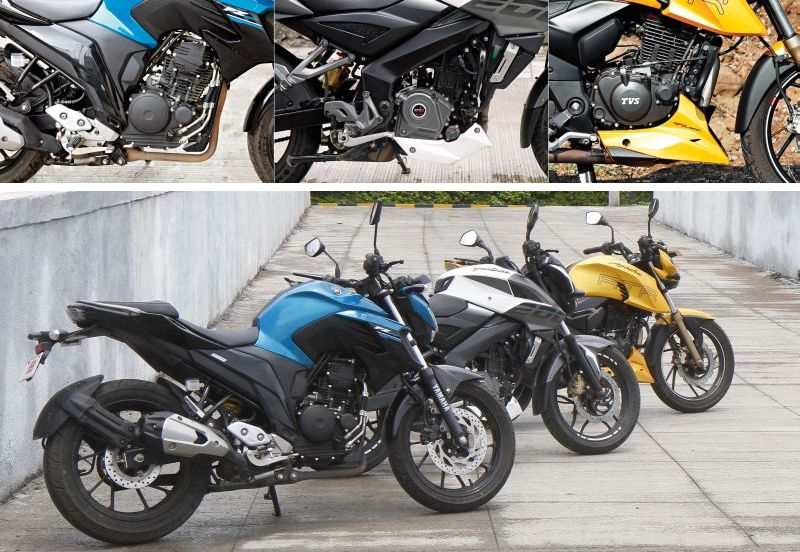
Here comes the fun part — performance run. Its light weight and effortless drive make the Yamaha surprisingly quick from 0 to 60 km/h: just 3.46 seconds. Yes, it’s close to a second faster than the Apache and half-a-second quicker than the NS. No one could have guessed that in the 0-100 km/h sprint, the fluid Yamaha would be 1.5 seconds faster than the Pulsar and beat the Apache by nearly three seconds!
Despite their sporty stance these bikes are essentially designed for city use, with the occasional weekend run on mountain roads. So, mid-range plays an important role. We tested the three bikes rolling from 30 km/h in third gear to see which one reached 70 km/h first. The Apache was the slowest in the group, managing it in 6.62 seconds, the Pulsar fared better and shaved off a second, while the Yamaha took merely 4.75 seconds.
Another aspect that helps decipher each bike’s character more clearly is their riding dynamics. During our long ride, we found the Pulsar to offer pretty sorted handling and ride; one of the major reasons for this being its modern perimeter frame, which is more rigid than its competitors’. None of these bikes are sprung too soft or firm, but the Pulsar has a good balance. The suspension takes bad roads in its stride and its long wheelbase offers good straight-line stability. It’s just not as nimble as the Apache. The TVS with its short wheelbase and racing genes is the sharpest of the lot, quick to change direction, and is extremely alert. Also, it’s not forgiving. So you have to be equally alert while giving input. It’s definitely the most engaging as it keeps you on your toes.
The Yamaha is a completely different animal. The Japanese have a way of giving their bike a balance which is close to a Zen-like state. The harmony between the suspension and chassis, and how the rear follows the front wheels on the FZ25 are nothing short of a symphony. It’s a feeling of calmness which sets it apart from the other two bikes. It’s also slightly softer sprung, and offers more comfort than the others. The Yamaha feels most relaxed; be it while negotiating traffic or while scraping the foot-pegs through fast corners. It’s the easiest bike to live with.
Until now we’ve only been speaking about going faster; so let’s shed some light on their braking prowess. All these three bikes have disc brakes on both their wheels and the stopping power is closely matched. The Yamaha and Apache brakes offer a little more feel and feedback, and that’s probably why they’ve managed better anchoring. The FZ25 is the quickest to come to a halt from 80 km/h, followed by the Apache, while the Pulsar is just a fraction behind. As of now, none gets ABS as standard which would have reduced the braking distance considerably.

And that brings this story to a halt as well. As discussed earlier, each bike has a set of virtues and a few drawbacks. So, which one is good at what? The Pulsar is the least expensive and also has a fine balance of sportiness, practicality and is the better machine here for touring — thanks to Bajaj’s widespread network and that sixth gear. Furthermore, it’s a ‘Pulsar’: the epitome of sport biking in India.
The Apache is the most engaging bike to ride as it makes your response sharper. It’s also the most funky-looking, which is sure to impress your mates. The one bike which is always game for a race, be it on a track or on the street. If you like riding on the edge, this is your calling.
The Yamaha is the most understated bike in this comparison. The refined engine doesn’t feel that it’s the quickest, the exhaust doesn’t scream as the bike overtakes the rest, and for a 250-cc it’s very well priced. It clearly is a more mature pick.

